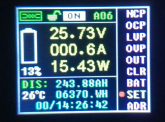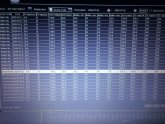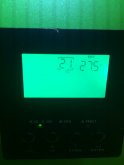@thealaskan an update today. Had issue #3 since Dec today when utility cut off and it was cloudy.
First, the BMS in one of the four batteries in 2P2S cut off. The LV2424 continued to run off the batteries, and was able to charge when the clouds permitted a tiny trickle because of the 3 batteries. But, it cut off the load per the 23V setting I had, though was registering near 24V without external load. This is progress in that I'm able to achieve a state where it can recharge on its own. But, note that it continues to run off the batteries, so in this state you're in a race to get PV or run out of juice.
I had minimal load. But when I tried to increase it, it pushed it over the edge. Now, another battery tripped its BMS.
Here's the thing. When utility power died, I checked the battery levels before there was an issue, and via the LED the two batteries that cut off reported 4 of 5 LED lights, indicating near 80% capacity. When the first BMS cut off, I had significant load, as I tried to keep my servers going. But, not enough to justify entirely draining one of the batteries in under 30 minutes. It would of had to of pulled all current from just that battery, and even if that was happening, should of taken longer, perhaps 60 minutes.
I then dramatically lowered the load, taking my servers offline. The next one died shortly as well, prolly within the next 30 minutes.
When I reset them, they reported around 10.5V. The other two that still held a decent charge and had 3-4 LED lights read near 12.75V. I put the two dead batteries on a low AC 12V charger. Over time, they slowly built up a charge. In other words. EVERYTHING suggested that they really were dead and that they needed a charge, and took a charge without a problem, and appeared normal in their rate of return to a higher SoC.
So, this leaves these questions?
-
Did they somehow very quickly lose a lot of their SoC? How can this happen? That's how it appears if you trust everything else.
-
Is the LED meter correct? I've had no reason to believe it isn't. It certainly goes up about the pace you'd expect when charging. But, going from 80% to 0% with the load I had just made no sense.
-
Why weren't they near full before this incident? Note that I was not running my servers off them until after the utility cut power. The servers have their own UPS, so this was just to prevent their small UPS systems from failing. In other words, it's hard to imagine that they weren't at least 75% full when utility cut off, leaving me with at least 3 KWH of storage, or 4 hours with my servers running in addition to the other loads.
Long story short, in a 2S2P configuration, I've yet to be able to rely on them to provide expected capacity for a significant load. Note that I have stability in all scenarios so far if I have a minimal load. Even, for instance, when I had a minimal load with only 3 batteries operating, the voltage was not dropping on the bank. Only when I added load did it drain it and kill another battery. But, that's quite an investment to maintain a small load.
Obviously, if the sun was out, I might never of experienced this as the PV would of met a good portion of the load even with my servers on, and all the load w/o the servers.





